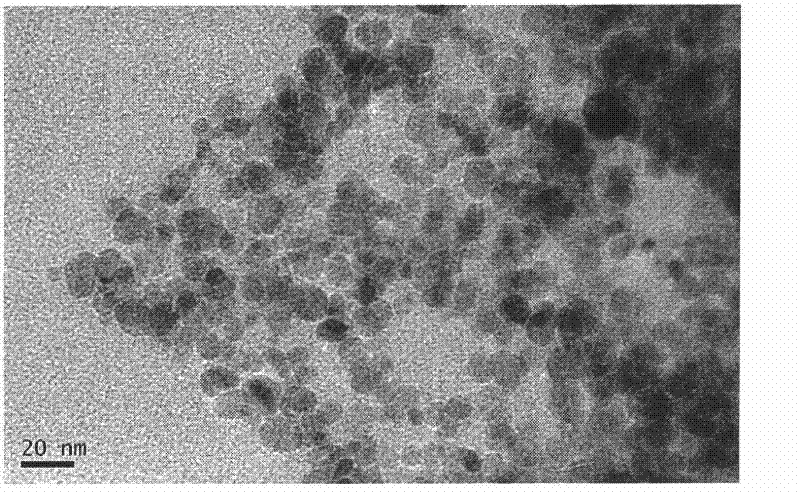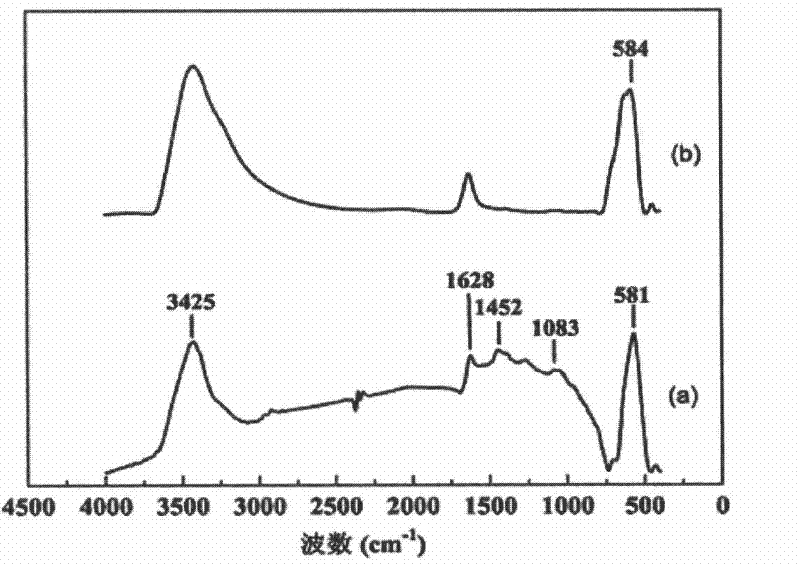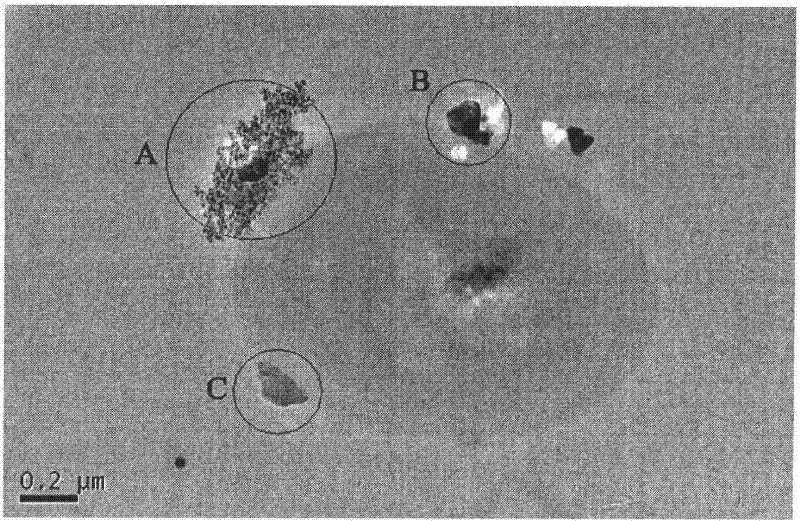Biological dechromizing medium, preparation method thereof and biological dechromizing method
A dechromization and biological technology, applied in chemical instruments and methods, biological water/sewage treatment, water pollutants, etc., can solve the problems of limitation, low concentration of reduced Cr, slow reduction rate, etc.
- Summary
- Abstract
- Description
- Claims
- Application Information
AI Technical Summary
Problems solved by technology
Method used
Image
Examples
Embodiment 1
[0055] Embodiment 1 Preparation of biological dechromium medium and removal of chromium in wastewater
[0056] 1. Preparation of superparamagnetic nanoparticles
[0057] Prepared by co-precipitation method, the reaction principle is: 2Fe 3+ +Fe 2+ +8OH - → Fe 3 o 4 +4H 2 O; press Fe in a 500mL stirred reactor filled with 200mL distilled water 3+ and Fe 2+ Add 8.672mmol ferric chloride (FeCl 3 ·6H 2 O) and 4.336mmol ferrous chloride (FeCl 2 4H 2 0), under the protection of nitrogen, the temperature is raised to 85°C to 90°C, pour 0.375mol concentrated ammonia solution, add 0.26mmol sodium citrate immediately after the reaction system turns black, add 0.26mmol PEI (molecular weight 10172Da ), continue to keep the temperature for 2 hours, and cool to room temperature; after the product is separated by a magnet, it is repeatedly washed with deionized water to obtain a PEI-modified superparamagnetic Fe that is stably dispersed in water. 3 o 4 nanoparticles.
[0058] ...
Embodiment 2
[0068] Example 2 Preparation of Biological Chromization Medium and Removal of Chromium in Wastewater
[0069] 1. Preparation of biological dechromation medium
[0070] Pick the LSSE-09 strain cultured on a nutrient slant and add it to 40 ml of basal medium. The composition of the medium: 1000 ml of deionized water, 10 g / L of tryptone, 5 g / L of yeast extract, and 10 g / L of sodium chloride. After 12-24 hours at 37°C and 150 rpm shaker culture, add it to 500 ml of basal medium according to the inoculum size of 1%, and after 12-36 hours, centrifuge to obtain the bacteria and then use 0.9% physiological Wash with salt water, and repeat three times to obtain the bacteria. Get a certain amount of thalline and place it in the Tris-HCl buffer system (0.05mol / L, pH 9.0), add the magnetic particles prepared in Example 1, so that the ratio between the magnetic particles and the bacteria is 1 / 20 (g / g), mixing thoroughly and uniformly, collecting by applying an external magnetic field, an...
Embodiment 3
[0076] Example 3 Preparation of Biological Chromization Medium and Removal of Chromium in Wastewater
[0077] 1. Preparation of biological dechromation medium
[0078] Pick the LSSE-09 strain cultured on a nutrient slant and add it to 40 ml of basal medium. The composition of the medium: 1000 ml of deionized water, 10 g / L of tryptone, 5 g / L of yeast extract, and 10 g / L of sodium chloride. After 12-24 hours at 37°C and 150 rpm shaker culture, add it to 500 ml of basal medium according to the inoculum size of 1%, and after 12-36 hours, centrifuge to obtain the bacteria and then use 0.9% physiological Wash with salt water, and repeat three times to obtain the bacteria. Get a certain amount of thalline and place it in the Tris-HCl buffer system (0.05mol / L, pH 9.0), add a small amount of magnetic particles prepared in Example 1, so that the ratio between the magnetic particles and the bacteria is 1 / 500 (g / g), fully mixed evenly, collected by an external magnetic field, and the ...
PUM
| Property | Measurement | Unit |
|---|---|---|
| Molecular weight | aaaaa | aaaaa |
Abstract
Description
Claims
Application Information
 Login to View More
Login to View More - R&D
- Intellectual Property
- Life Sciences
- Materials
- Tech Scout
- Unparalleled Data Quality
- Higher Quality Content
- 60% Fewer Hallucinations
Browse by: Latest US Patents, China's latest patents, Technical Efficacy Thesaurus, Application Domain, Technology Topic, Popular Technical Reports.
© 2025 PatSnap. All rights reserved.Legal|Privacy policy|Modern Slavery Act Transparency Statement|Sitemap|About US| Contact US: help@patsnap.com



